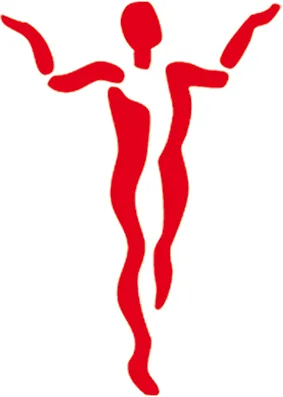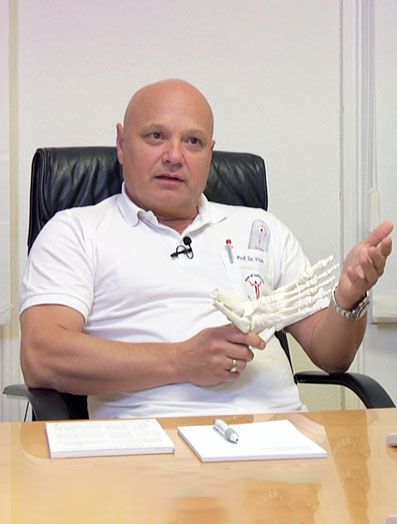Upper heel spur
The upper heel spur is located in the neck area of the Achilles tendon. Just above it a possible upper heel bone exists (calcaneus altus).
The upper heel spur rarely causes complaints. They are usually caused by a too narrow heel cap in the shoe, which then builds too much pressure on the heel, leading to inflammation, irritation and pain. A high heel bone and upper heel spurs often occur together.
Treatment
Treatment begins with conservative shoe inserts, glued, soft heel caps, anti-inflammatory drugs, X-ray irradiation, possibly infiltrations and shockwave therapy.
If this treatment does not help, the spur is removed surgically.
Aftercare
If it is possible to remove the upper heel spurs without having to cause a defect in the achilles tendon, the foot can be used immediately. If achilles tendon fibers must be sacrificed, then a 3-8 weeks rest with crutches is required.
Sports and work ability
Office work after 2 weeks. Depending on the extent of the defect in the Achilles tendon, stressful sports and heavy physical activity can be started after about 4 to 12 weeks.
Results
About 90% of patients lose their pain after surgery.
Complications
Incomplete removal with persisting pain. Possibly too much tendon tissue is removed and the tendon could tear (never happened in our case though).
Example:
Picture 1: Massive pain in the heel. The swelling is indicative of a high heel bone.
Picture 2: In the X-ray a large upper heel spur apart from the high heel bone, which suggests that the Achilles tendon at least has a partial tear.
Picture 3: The MRI actually shows a partial rupture of the Achilles tendon.
Picture 4: After the operation: the upper heel spur was removed and the high heel bone was also straightened. Since the spur was sticking in the middle of the Achilles tendon, the Achilles tendon fibers were demolished, and in addition the tendon also had to be somewhat detached. The reconstruction of the Achilles tendon was performed using a bone anchor and strong seams.



